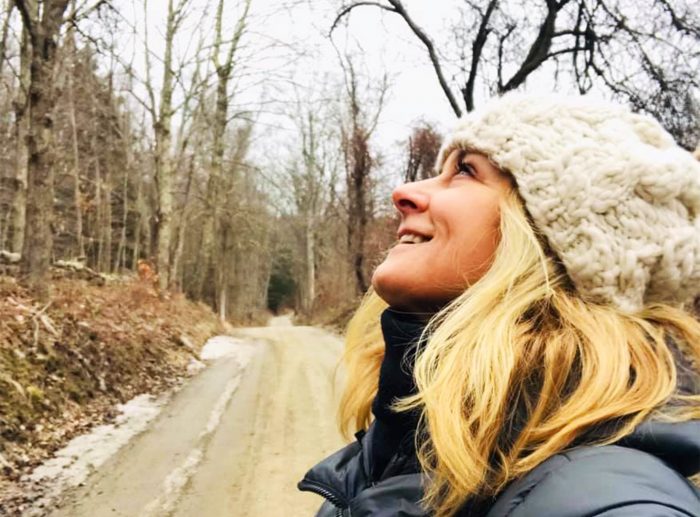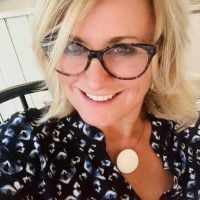“The world you see outside of you will always be a reflection of what you have inside of you.” ~ Cory Booker
My head hurts and my eyes are tired, but my sweet, tenacious, hopeful heart continues to thump its ragged, little, worn out beat.
Physically, my body carries more pain than it did before—my belly, my limbs, my neck, and my lower back. They bear the brunt of these past six, tumultuous months. The year 2020 has been “doozy” so far. The United States is quaking and we are collectively awakening from our dormant, apathetic slumber.
We want what’s good and what’s right.
Online, I preach to the choir. A satirical meme here, a not-so-funny photo there. I have no reservations expressing my political opinions via cartoons and articles from The Atlantic. Many of us regularly launch our fiery thoughts and truth bombs onto our social media platforms, but we are slow to take substantial action toward real reform.
We tap our frustrations and outrage into the abyss, deftly defending our standard talking point positions and righteous indignation. Speaking out across the internet is a passive response at best, and let’s face it, our opinions make no difference.
The state of the union feels ripe and ready for change, though. The energy required for actual progress is certainly present, but it’s up to us to use the momentum of this churning political climate to make things happen. Can we?
COVID-19 is teaching us lessons about rapid-fire misinformation, selfish agendas, misguided leadership, and the fact that science doesn’t give one whit about whether or not we believe in it. Cures and treatments for airborne viruses do not magically appear. They require measured brilliance divided by time and multiplied by patience.
We are quite used to getting what we want, when we want it, with little disruption. Instead of calmly weathering this storm and remaining cautious until science saves the day, we are rushing to “get back to normal,” which is a pampered reaction.
The Black Lives Matter movement proves—as other watershed moments have—that there is indeed a tipping point in U.S. society when it comes to glaring injustice, and catalysts for change need not be model human beings from perfect circumstances to create a seismic shift. They simply exist within the moment that our human energy redirects.
As provocateurs in our recorded (and often hidden) history, they are attached to why and when things finally change, but they are not the blinking light reason. A stroll through the past reminds us that our human psyche is often forced to evolve when enough pressure is applied.
Disconnected. Out of sorts. Unsettled. Guilty. Weak. Complicit. Angry. Astonished. Fed up. Motivated.
These are painfully accurate descriptors for how I feel, and I know I’m not alone. This is what internal and external “change” actually feels like, I think. These are the feelings of a person who is ready for the tide to turn, to be washed from the inside out, and to be part of the rolling wave itself. There is nothing more difficult than changing our minds, in any reality or realm, but it’s the most powerful force in the evolution of humankind on the planet.
What we carry around, what we lug from one place to another, conversation to conversation, day in, day out, is heartbreaking and heavy—especially these days.
Our experiences nurture our behaviour and how we interact with others, but it’s our nature that continually fights to come clean. Applying real and lasting change so that our futures look different is a big job. It’s about action. Keyboard warriors, such as myself, need to hop off the rambling bandwagon to nowhere, and into the revolution.
Make no mistake, racism and sexism propagate in much the same way a virus does, which is to say that it must be planted first, then cultivated within a receptive environment. Change is possible when we cut the bad stuff off at the root or rip it right out of the ground forever, in order to plant something new.
There are moments when I know beyond a shadow of a doubt that all is not lost for humanity. Inside this imperfect world, remains the sheer and stunning, perpetual perfection of nature, just as it is and just as we are—untouched, unspoiled.
Nature is the opposite of nurture. Social viruses such as sexism, racism, and other varied, groundless fears do not exist in the woods, the mountains, along the coast, down country roads, in valleys or canyons or plains. They are neither planted nor propagated in nature—not inside our souls at birth, not in our human hearts or heads. It is not our inherent nature to be racist, sexist, or hateful. It is not part of our human DNA to be violent or discriminatory toward what we do not understand.
We are taught these things.
We must grow away from the stagnant and detrimental “norms” of our culture. They are the stubborn weeds that populate our world. If we can remove them, and diligently tend to their imminent demise, our inherent unsullied nature will prosper.
“God’s green earth,” as they say.
I am a human being who struggles with all sort of emotions. Most days, I feel like I’m carrying around the weight of the whole damn world. For balance, I go outside. When I’m feeling especially low, hopeless, or jaded, I turn to my natural surroundings for guidance and support.
My eyes may swim with wariness, depletion, cynicism, and provocation, but they also absorb the raw beauty of a stream, the resilience of a tree, and the sudden surprise of a sun-drenched clearing. My head and my heart may teem with uncertainty, but I also receive an abundance of authentic joy during moments of spontaneous laughter with a close friend, as we traipse and trip over roots and rocks along the rugged terrain of trails less traveled.
Clarity comes from knowing that nature itself is perfect, and it’s innately human in nature to strive for what is good and right.
It’s how I still hold space for hope.
~







Read 2 comments and reply